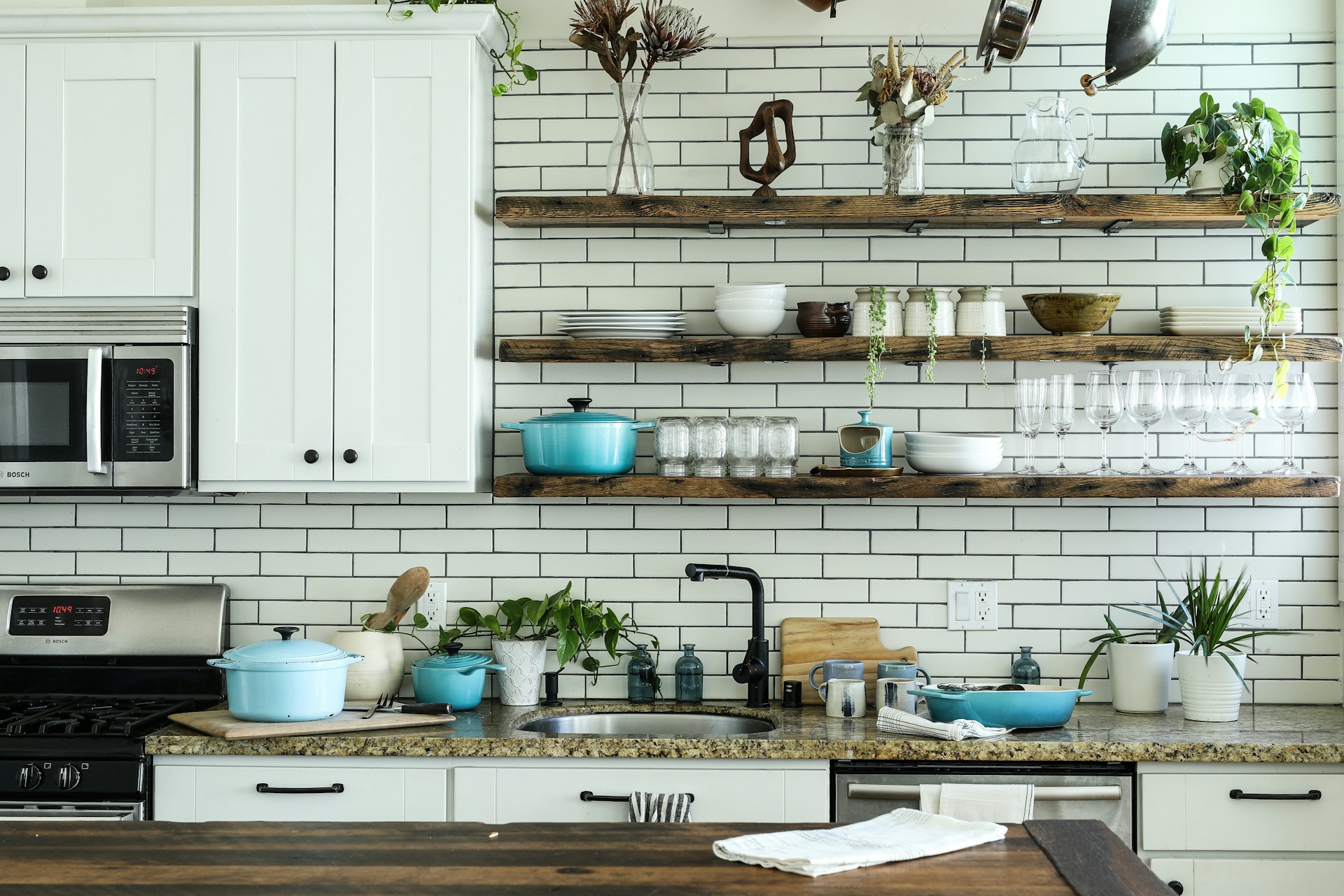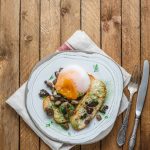Minimizing Noise in Your UK Kitchen with Open Shelving Solutions
Creating a peaceful and functional kitchen is a top priority for many homeowners, especially in the UK where kitchen spaces can be limited. One of the challenges in achieving this is managing noise levels, particularly in kitchens with open shelving. Here’s a comprehensive guide on how to minimize noise in your kitchen, ensuring it remains a serene and efficient space.
Understanding the Sources of Noise in Your Kitchen
Before we dive into the solutions, it's essential to identify the common sources of noise in a kitchen. These include:
Also to read : Top Strategies for Maximizing Space and Efficiency in Your UK Kitchen Drawer
- Appliances: Refrigerators, dishwashers, and ovens can generate significant noise.
- Foot Traffic: High-traffic areas, especially around the kitchen island or near the sink, can lead to more noise.
- Cooking Activities: Pots and pans clanging, utensils being used, and the sound of food preparation all contribute to the overall noise level.
- Ventilation: Extractor fans and ventilation systems can also add to the noise.
Designing Your Kitchen for Noise Reduction
When planning your kitchen design, incorporating elements that reduce noise can make a significant difference.
Choose the Right Materials
Using sound-absorbing materials in your kitchen design can help reduce echo and overall noise levels.
Also to see : Top Strategies for Achieving a Clutter-Free Kitchen in the UK: Tips for an Organized Space
- Acoustic Panels: While often used in home theaters, acoustic panels can also be effective in kitchens. These panels, made from materials like foam or fibreglass, can be placed on walls or even integrated into your open shelving units to absorb sound waves.
- Soundproofing Countertops: Opt for countertops made from materials that are less likely to produce loud noises when items are placed on them. For example, quartz or granite countertops are quieter than stainless steel or metal surfaces.
- Flooring: Slip-resistant flooring materials like cork, rubber, or textured vinyl not only prevent slips but also reduce the noise from foot traffic.
Optimize Your Open Shelving
Open shelving can be both functional and aesthetically pleasing, but it can also contribute to noise if not planned carefully.
- Soft-Close Drawers and Bins: Incorporate soft-close mechanisms on your drawers and bins to reduce the noise from opening and closing them. This is particularly useful in kitchens where children might be involved in meal preparation.
- Labelled Storage: Use labelled storage bins and containers to keep items organized. This not only helps in maintaining cleanliness but also reduces the noise from searching for items.
Practical Strategies for Reducing Noise
Here are some practical strategies to help you minimize noise in your kitchen:
Soundproof Your Appliances
- Boiler Cupboard Soundproofing: If your boiler is located in a cupboard within your kitchen, soundproofing it can make a significant difference. Use weatherstripping around the edges, acoustic panels, and fibreglass insulation to reduce noise leakage.
- Appliance Placement: Place noisy appliances like dishwashers and refrigerators away from the main cooking area to reduce the impact of their noise.
Use Sound-Absorbing Elements
- Plants and Decor: Incorporate plants and decorative items that can act as natural sound absorbers. For example, hanging plants or placing a vase with fresh flowers can add a touch of elegance while helping to absorb some of the sound.
- Rugs and Mats: Place rugs or mats in high-traffic areas to reduce the noise from foot traffic.
Create a Quiet Zone
- Zone Your Kitchen: Divide your kitchen into different zones, such as a cooking zone, a prep zone, and a dining zone. This can help in reducing the overall noise level by spreading out the activities.
Detailed Tips for a Quieter Kitchen
Here are some detailed tips to help you create a quieter kitchen:
Reduce Clanging and Clattering
- Use Silicone Utensils: Silicone utensils are softer and produce less noise compared to metal or wooden utensils.
- Soft-Close Cabinet Doors: Ensure all cabinet doors and drawers have soft-close mechanisms to prevent loud slamming.
Minimize Foot Traffic Noise
- Area Rugs: Place area rugs or mats in front of the sink, stove, and refrigerator to reduce the noise from foot traffic.
- Quiet Flooring: Choose flooring materials that are designed to reduce noise, such as cork or rubber flooring.
Optimize Your Open Shelving for Noise Reduction
- Use Baskets and Bins: Store items in baskets or bins on your open shelves to reduce the noise from items falling or being moved around.
- Place Heavy Items Below: Keep heavier items like pots and pans on lower shelves to reduce the noise from lifting and placing them.
Table: Comparing Soundproofing Materials for Your Kitchen
| Material | Description | Cost Range | Effectiveness |
|---|---|---|---|
| Acoustic Panels | Made from foam or fibreglass, absorbs sound waves | £20-£50 each | High |
| Fibreglass Insulation | Densely packed to absorb sound and provide thermal insulation | £10-£30 per roll | High |
| Weatherstripping | Seals gaps around doors and edges to reduce noise leakage | £5-£15 per roll | Medium |
| Soundproof Blankets | Made from mass-loaded vinyl, blocks and absorbs sound | £20-£50 each | High |
| Soft-Close Mechanisms | Reduces noise from opening and closing drawers and cabinets | £10-£30 each | Medium |
| Cork or Rubber Flooring | Reduces noise from foot traffic and provides slip resistance | £20-£50 per sqm | Medium |
Real-Life Examples and Anecdotes
A Family's Experience
A family in London decided to renovate their small kitchen to make it more functional and quieter. They opted for open shelving but incorporated soft-close drawers and bins to reduce the noise. They also placed a rug in front of the sink and stove to minimize foot traffic noise. The result was a kitchen that felt more spacious and significantly quieter.
Professional Insight
"Creating a quiet kitchen is not just about reducing noise; it's also about creating a more enjoyable living space," says Julie Peak, a professional organizer. "By using sound-absorbing materials and optimizing your open shelving, you can make your kitchen feel more serene and functional".
Creating a quieter kitchen with open shelving solutions involves a combination of thoughtful design, practical strategies, and the right materials. By understanding the sources of noise, optimizing your kitchen design, and using sound-absorbing elements, you can make your kitchen a more peaceful and enjoyable space.
Final Tips
- Plan Ahead: When designing your kitchen, consider the noise levels and how you can minimize them.
- Use Technology: Consider using smart appliances that are designed to be quieter.
- Maintain Your Space: Regularly clean and maintain your kitchen to ensure that it remains a quiet and efficient space.
By following these tips and strategies, you can create a kitchen that not only looks great but also feels peaceful and functional, making it the heart of your home where you can enjoy quality time with your family.






